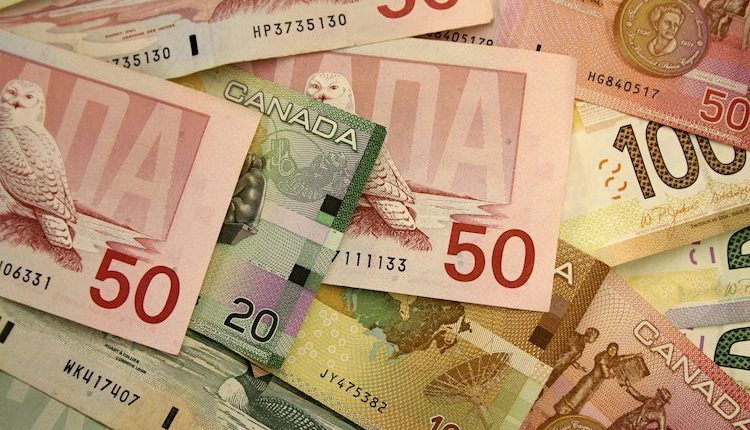- Canadian Dollar market flows turn bullish following US & Canada labor data prints.
- Canada Unemployment Rate flat at 5.5%, US unemployment holds at 3.8%.
- US NFP handily beats expectations with slightly softer earnings.
The Canadian Dollar (CAD) is climbing to fresh highs, set to challenge Monday’s trading range following a bumper labor data release, with a firm US Nonfarm Payrolls (NFP) reading for the US Dollar (USD) mixing with misses on hourly wages and unemployment.
Canada: Weakness under the hood in the employment report should limit its implications for BoC
Canada labor markets continue to improve, with the Canadian economy adding more jobs than expected, but a bumper NFP reading is seeing mixed results for the USD on lethargic US unemployment rate and wages figures.
Daily Digest Market Movers: Canadian Dollar staggers on labor data, US NFP
- US NFP broadly beat expectations, printing 336K against the expected 170K, and handily vaulting over the previous 227K (revised upwards from 187K).
- US data came in mixed despite the broad NFP beat, with hourly wages holding steady at 0.2% for September against the expected uptick to 0.3%.
- US Unemployment Rate also failed to meet expectations, flat at 3.8% versus the forecast 3.7%.
- Canadian Unemployment Rate held at 5.5% against the forecast 5.6%.
- Canadian jobs change shows a bumper 63.8K change in net employment against the forecast 20K and clearing the previous 39.9K.
- The data-beat for the Loonie was a clean beat for the CAD against the US Dollar, and the USD/CAD pair is dropping back after spending most of the week on the high end.
- US 10-year Treasury yields shot back up to 4.88% for the day, but the Loonie is holding surprisingly resilient.
- Little meaningful data remains until Wednesday’s US Producer Price Index (PPI) figures.
Technical Analysis: Canadian Dollar catches a rise on labor data beats, sending USD/CAD back to 1.3660
The USD/CAD clipped into an intraday high of 1.3746 before getting forced back down the charts into 1.3640, losing contact with the 50-hour Simple Moving Average (SMA) near 1.3720 and making a run for support at the 200-hour SMA near 1.3620.
Despite Friday’s reprieve, the USD/CAD remains firmly bullish on the charts, trading well above the 200-day SMA near 1.3450 and the 50-day SMA confirming a bullish cross of the longer moving average.
The Relative Strength Index (RSI) has pulled back from overbought conditions on the daily chart, and USD/CAD short interest will want a bearish confirmation before following the indicator lower.
Canadian Dollar FAQs
The key factors driving the Canadian Dollar (CAD) are the level of interest rates set by the Bank of Canada (BoC), the price of Oil, Canada’s largest export, the health of its economy, inflation and the Trade Balance, which is the difference between the value of Canada’s exports versus its imports. Other factors include market sentiment – whether investors are taking on more risky assets (risk-on) or seeking safe-havens (risk-off) – with risk-on being CAD-positive. As its largest trading partner, the health of the US economy is also a key factor influencing the Canadian Dollar.
The Bank of Canada (BoC) has a significant influence on the Canadian Dollar by setting the level of interest rates that banks can lend to one another. This influences the level of interest rates for everyone. The main goal of the BoC is to maintain inflation at 1-3% by adjusting interest rates up or down. Relatively higher interest rates tend to be positive for the CAD. The Bank of Canada can also use quantitative easing and tightening to influence credit conditions, with the former CAD-negative and the latter CAD-positive.
The price of Oil is a key factor impacting the value of the Canadian Dollar. Petroleum is Canada’s biggest export, so Oil price tends to have an immediate impact on the CAD value. Generally, if Oil price rises CAD also goes up, as aggregate demand for the currency increases. The opposite is the case if the price of Oil falls. Higher Oil prices also tend to result in a greater likelihood of a positive Trade Balance, which is also supportive of the CAD.
While inflation had always traditionally been thought of as a negative factor for a currency since it lowers the value of money, the opposite has actually been the case in modern times with the relaxation of cross-border capital controls. Higher inflation tends to lead central banks to put up interest rates which attracts more capital inflows from global investors seeking a lucrative place to keep their money. This increases demand for the local currency, which in Canada’s case is the Canadian Dollar.
Macroeconomic data releases gauge the health of the economy and can have an impact on the Canadian Dollar. Indicators such as GDP, Manufacturing and Services PMIs, employment, and consumer sentiment surveys can all influence the direction of the CAD. A strong economy is good for the Canadian Dollar. Not only does it attract more foreign investment but it may encourage the Bank of Canada to put up interest rates, leading to a stronger currency. If economic data is weak, however, the CAD is likely to fall.
Read the full article here

